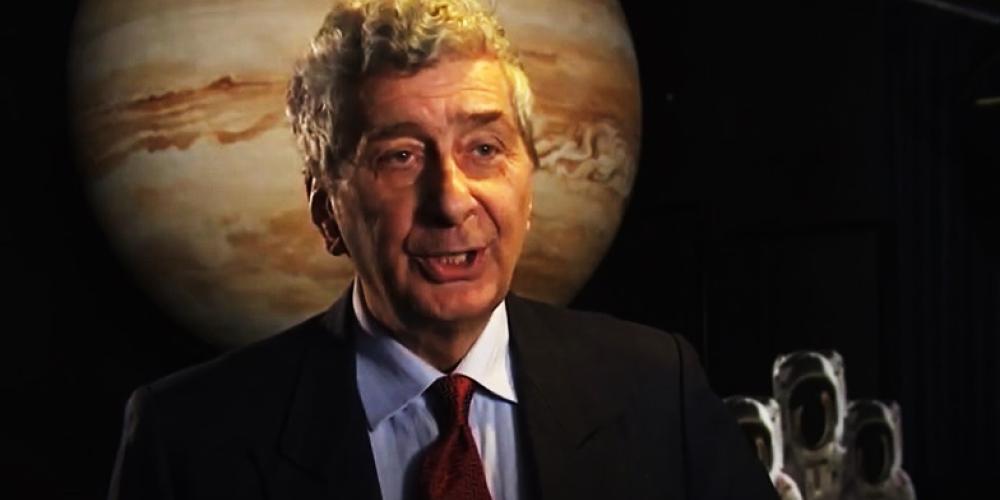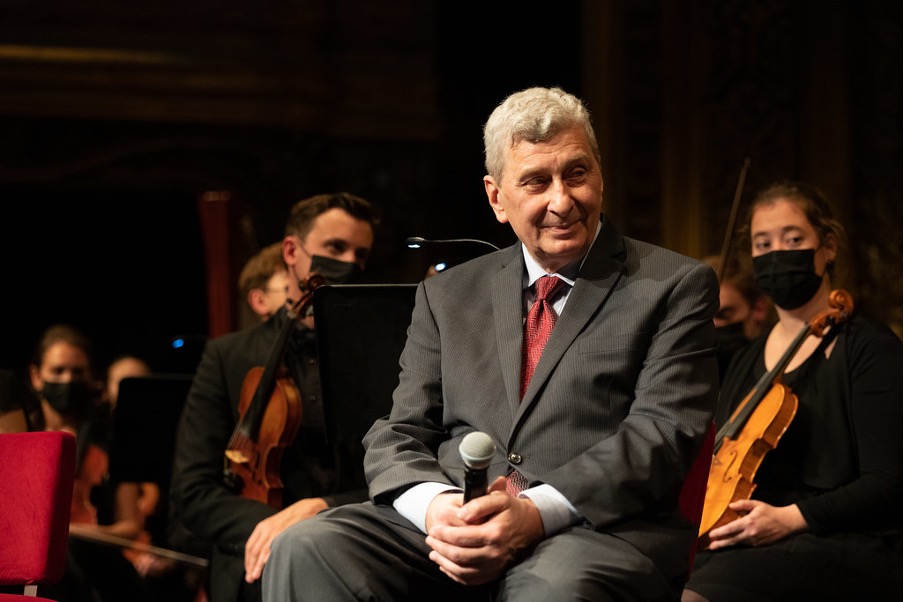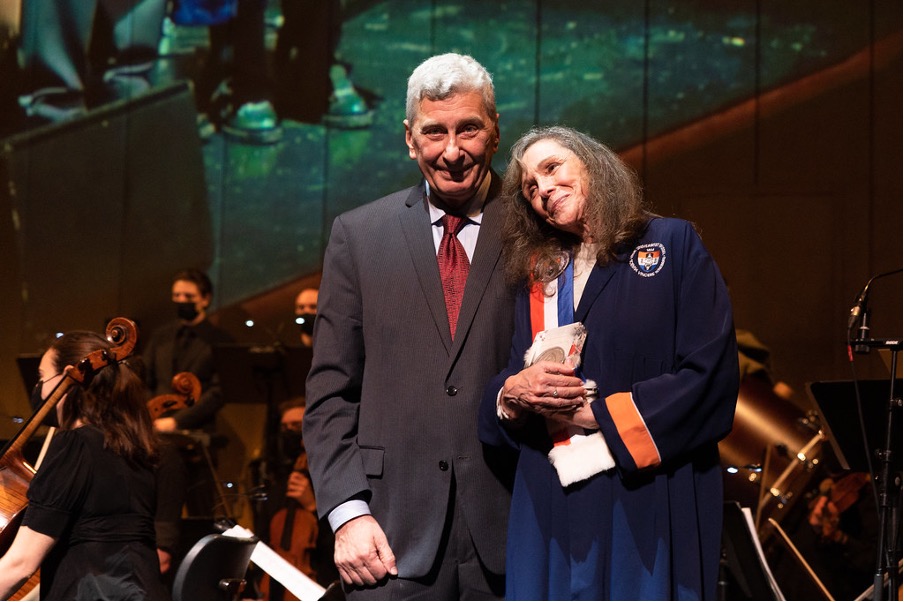
A leading scientist, entrepreneur and VUB alumnus, Dr. Clement Hiel helped put the Belgian space industry on the map. After obtaining a graduate and doctoral degree at the VUB, Hiel left for the United States, where he worked for the U.S. government agency NASA for decades. Hiel reached emeritus status at the VUB in 2017, but continues to teach at the University of California, Los Angeles, and is also a VUB Fellow and Commander in the Order of Leopold II.
You worked at NASA when the first Belgian person went into space on the NASA Atlantis space shuttle 30 years ago. What was that like as a Belgian living in the U.S.?
‘When Dirk Frimout left on the space shuttle, I had already been working for NASA for five years. I had deep respect for Dirk Frimout and his colleagues; they were putting everything on the line to advance space science. What they did, required an enormous commitment, a very high level of training and deep dedication from the astronauts themselves and their families. But I can’t remember saying that I felt proud of Dirk Frimout that day. I think I was probably a little bit too busy.’
What did this moment mean for the Belgian space industry?
‘Much of what happened in 1992 was in reality the result of the efforts of people decades before that. The Russian replica of the Sputnik satellite at the 1958 World Exhibition in Brussels (Expo 58) for instance attracted a lot of interest. Former weatherman Armand Pien was so impressed by it that he decided to pursue an additional degree in astronomy. With the support of the Belgian government, Pien himself as a science communicator as well as a number of university professors and entrepreneurs helped build an important ecosystem that was able to respond to international developments in the space industry. That’s why that moment in 1992, for me, mostly emphasises that that generation made the right choice when they decided to focus on space travel 30 years earlier.’
How has the Belgian space industry evolved over the last 30 years?
‘The international space industry has become an economic juggernaut that generates almost 500 billion euros a year, and Belgium has gotten more than a fair share of that pie. Budgets were so much more limited in 1992. We also had and still have a few players in Belgium that enjoy international acclaim. For instance, the von Karman Institute in Sint-Genesius-Rode, a close partner of the VUB.’
Continue reading after the picture.  "The international space sector has become an economic giant of nearly 500 bilion euros a year, of which Belgium takes more than its share." - VUB alumnus and engineer Clement Hiel. Picture: VUB / Thierry Geenen.
"The international space sector has become an economic giant of nearly 500 bilion euros a year, of which Belgium takes more than its share." - VUB alumnus and engineer Clement Hiel. Picture: VUB / Thierry Geenen.
What are Belgian space scientists generally good at?
‘Belgian scientific and technological advances from generations ago continue to have ripple effects in the U.S. today. Karel Bossart, a mining engineer who graduated from VUB’s sister university ULB in 1924 and subsequently moved to the U.S., is for instance the father of the Atlas rocket. His legacy is incredible. NASA’s spectacular ‘deep space’ successes during the 1970s were for instance all made on Atlas rockets. Even today, in 2022, the Atlas rocket continues to be used to launch commercial satellites. He is truly someone who never got the tremendous appreciation he deserved!’
What role do Belgian companies play in the international space industry?
‘You today find a lot of sectors in the space industry that did not exist 30 years ago. Belgian companies are active and successful in these new areas, which include geospatial information processing, big data, cryptography – you name it. On a lighter note, astronauts at the international space station can submit a wish list of things they’d like to eat and often ask for Belgian cheese. This means that the Elon Musk rockets that travel to the space station, loaded up with 3.5 tonnes of supplies and parts, regularly contain Belgian cheese. When a cheese supplier in West Flanders was contacted by NASA for the first time, he initially thought it was a joke.’
What role do Belgian universities and academics play in the international space industry?
‘Universities and researchers are able to excel when they focus on what I call the three Cs – curiosity, creativity and courage. You won’t make any scientific advances by developing a zero-risk research project and crossing out one task after the other from your list. For scientific progress, you have to put the three Cs into practice.
Former rector Caroline Pauwels recently wrote a beautiful book about curiosity, the first C. Creativity is self-explanatory, while courage is what it takes to leave one’s comfort zone. A group of researchers at the University of Liège come to mind here. After struggling to get telescope time in Chile, which is where all the big telescopes are, they decided to build two robotised, optical telescopes that they were able to manipulate from their iPhones in Liège. They went on to discover the TRAPPIST exoplanets with those self-made telescopes – a ground-breaking astronomical discovery. These researchers specialised in astronomical observations and astronomical data processing; building two telescopes was not part of their expertise and took them out of their comfort zone. You can moreover imagine that funders must have been sceptical of the project. It required courage to submit such an unusual research proposal because it prompted scepticism and reduced their odds of obtaining financial support.’
What evolutions in the space industry can we reasonably expect in the next 30 years?
‘There’s a real chance that we’ll discover whether or not there is life on Mars. And more importantly, whether there is life in the galaxy. Together with NASA, the Royal Observatory of Belgium will also work on defending our planet from meteorites in the coming decades. Because the more observations we do, the more meteorites we discover that are headed straight for Earth.’
Like in the recently released movie Don’t Look Up?
‘Yes, exactly. That movie wasn’t the product of someone’s wild imagination. Carl Sagan, the late husband of Ann Druyan, the November recipient of a VUB honorary doctorate, put it as follows: ‘We live in a cosmic shooting gallery.’ It wouldn’t even have to be an enormous meteorite; a stadium sized meteorite could already do incredible damage.’
The international space travel industry has become an economic juggernaut since 1992 and Belgium has managed to punch above its weight internationally. The Belgian space industry and Belgian space researchers have built an excellent reputation abroad, partly due to the efforts of VUB alumni like Clement Hiel. He worked for the U.S. space organisation NASA his entire career. Clement Hiel as proximus of VUB honorary doctor Ann Druyan, communicationscientist and wife of late Carl Sagan. In 2021 Ann Druyan received an honorary doctorate at the Mint in Brussels. Picture: VUB/Thierry Geenen.
Clement Hiel as proximus of VUB honorary doctor Ann Druyan, communicationscientist and wife of late Carl Sagan. In 2021 Ann Druyan received an honorary doctorate at the Mint in Brussels. Picture: VUB/Thierry Geenen.